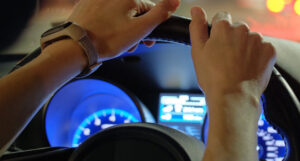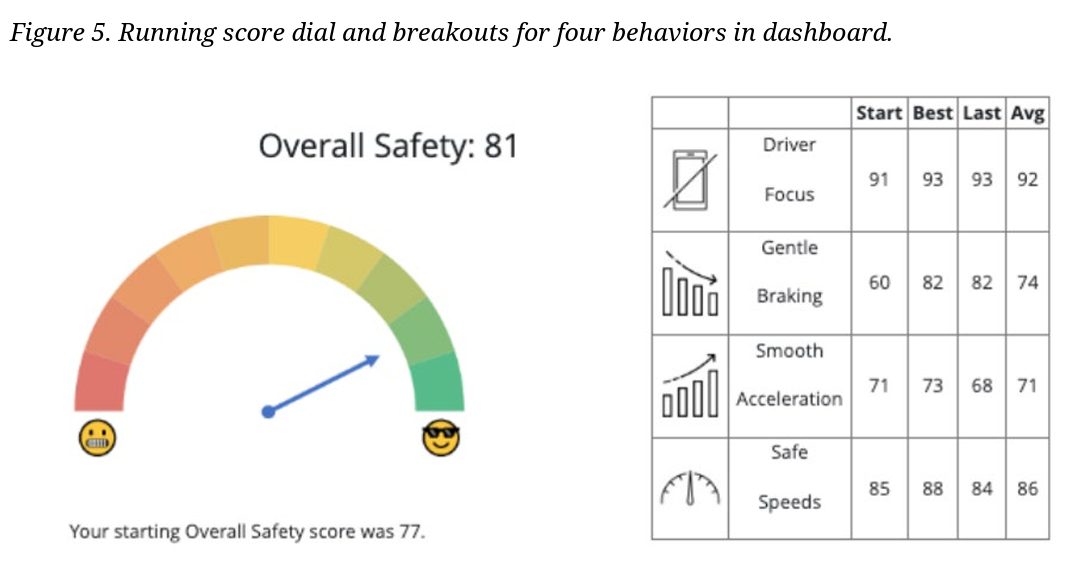
AAA study on UBI effectiveness finds improvements in speeding, hard braking, rapid acceleration; phone use unchanged
By onAnnouncements
The AAA Foundation for Traffic Safety recently conducted a study with 1,449 drivers recruited nationally via social media advertisements for a 24-week randomized controlled trial. Their speeding, hard braking, rapid acceleration, and handheld phone use were measured with a smartphone app during a six-week baseline period.
David Yang, the foundation’s president and executive director, said in a AAA press release that the research gauged what motivates drivers to change certain risky driving behaviors.
“Finding ways to reduce these behaviors can positively impact traffic safety and reduce injuries and fatalities on our roads,” he said.
The foundation notes that research shows speeding, aggressive driving, and distraction contribute to a significant number of crashes, and efforts to change these behaviors often involve driver education, public awareness, and legislation.
“While these approaches can be effective, they often require significant resources and time to yield results, and the crash trends suggest that additional countermeasures are also needed,” the release says.
“Smartphone technology enables the measurement of dangerous driving behaviors, which could pave the way for remedies to help drivers improve their safety. Interestingly, this may already be happening through usage-based insurance (UBI) programs, which are typically used by insurance companies to offer customers incentives for safe driving. However, it is challenging to determine whether UBI programs truly improve safety, as only individuals who opt-in are monitored.”
The foundation examined whether providing feedback and incentives — typical of UBI programs — enhances driver safety. Researchers also explored whether targeted goals, either assigned or self-selected, lead to more significant improvements.
Analyses controlled for baseline driving behavior and demographic characteristics and compared each treatment group to the control group and each other. The six-week post-intervention period was analyzed to test for sustained improvements in driver safety.
The use of handheld phones as well as events of speeding, hard braking, and rapid acceleration were monitored.
Participants were divided into four groups, with different levels of feedback and advice over a 12-week period:
-
- The Observation group — served as the control. Driving was monitored during this period without any feedback or bonus incentive.
- The Standard Feedback group — received weekly feedback and advice via text messages on all monitored behaviors.
- The Assigned Goal group — focused on one specific behavior assigned to them. Received weekly feedback and advice via text messages on that behavior.
- The Chosen Goal group — participants selected one behavior to focus on and set a goal for improvement. They were given weekly feedback and advice via text messages on that goal.
All groups, except the observation group, could earn bonus incentives based on their overall driving safety.
Assigned Goal participants showed improvements that weren’t significantly greater than the Standard Feedback participants.
All three treatment groups exhibited improvements relative to the control group in speeding (11-13% reduction), hard braking (16-21%), and rapid acceleration (16-25%).
“Surprisingly, the use of handheld phones remained unchanged,” the release states. “It is possible that the baseline safety scores provided to participants at the start of the study for this behavior led drivers to believe that they were being safer than they actually were and, therefore, there was less need for improvement.”
Participants reported how helpful the following tactics were in changing their behaviors:
-
- 67.4% — the potential to earn extra money
- 53.9% — weekly driving feedback via text message
- 45.8% — weekly dashboard (provided detailed driving information for the week)
According to the results, the Assigned Goal and Chosen Goal groups displayed higher engagement with the dashboard, which correlated to higher improvement in risky driving behaviors.
After the 12 weeks, participants were monitored for six weeks without any feedback or incentives to determine if their habits would persist without reinforcement. The study found that, generally, participants continued to drive more safely, indicating that they did so without receiving feedback or incentives, according to the results.
“This trial experimentally demonstrated, for the first time, that the kinds of feedback and incentives offered by UBI programs can improve driver safety across a range of behaviors,” the foundation wrote. “It also showed that these safety improvements may persist beyond a driver’s rating period, lessening concerns that UBI discounts reward risky drivers who only drive safely when monitored.
“In general, similar improvements were seen across key demographic groups, lessening health equity concerns about UBI programs. Counter to what was hypothesized, the three treatment groups experienced a similar degree of improvement, suggesting it may not be beneficial to modify existing UBI programs to focus drivers’ attention on one behavior at a time. However, testing with a larger sample may reveal that assigning or allowing drivers to choose their goals offers meaningful benefits — either overall or for specific demographic groups. Regardless, the present results suggest that wider adoption of UBI and similar programs that provide active feedback via text or push notifications and incentives for safer driving would yield road safety gains.”
Jake Nelson, AAA’s director of traffic safety advocacy, added in the release, “It’s encouraging to see that many individuals stuck with safer habits even after the study. This shows that positive reinforcement, not just punitive measures, can lead to safer driving habits that can save lives.”
New research from the Toyota Collaborative Safety Research Center (CSRC) found that some previous assumptions about risky driving don’t explain everything about why drivers speed, concluding that external factors such as idling, surrounding vehicle speed, and time of day play a substantial role in drivers’ choices to speed.
Toyota said CSRC’s findings can help inform university researchers, groups like the Insurance Institute for Highway Safety, and regulatory bodies like the National Highway Traffic Safety Administration – which are all actively looking for ways to make roadways safer.
Images
Featured image provided by AAA
Figure 5 — behaviors dashboard provided in the AAA Foundation for Traffic Safety study.

